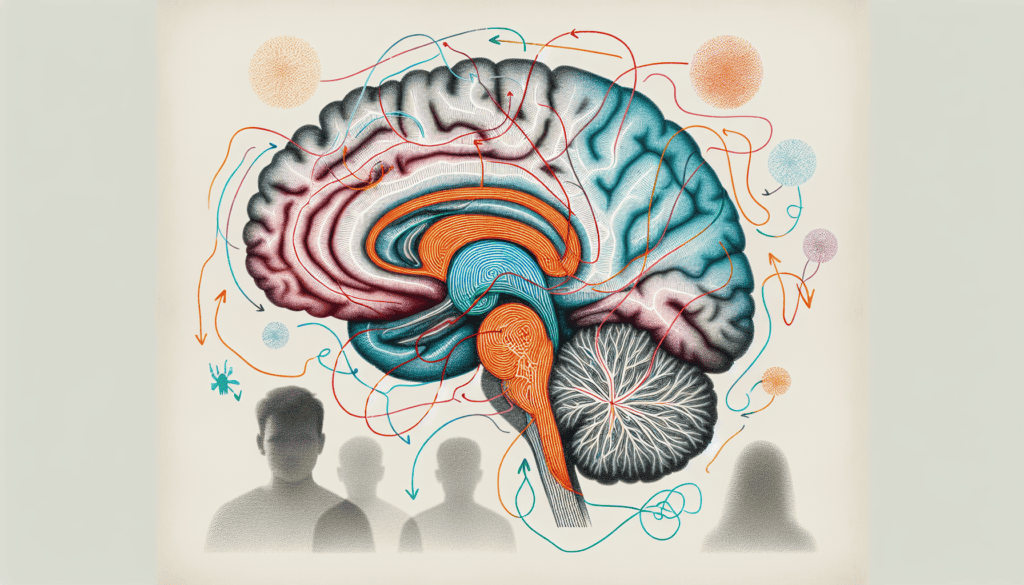Identifying the right treatment center for BPD is crucial in navigating the complexities of this mental health disorder. With access to the proper care, those living with BPD can significantly improve their quality of life.
You are looking for clarity on what effective treatment entails, and that’s exactly what we offer here – a focused look at the treatment methodologies, such as Dialectical Behavior Therapy, that define leading BPD treatment centers. Discover how to discern the best options as we guide you through the critical elements of specialized BPD care.
Understanding Borderline Personality Disorder
Borderline Personality Disorder (BPD) is a significant mental health disorder and one of the various personality disorders. It is characterized by:
Instability in relationships, moods, and behavior
Difficulties in regulating emotions, leading to impulsive actions
An inconsistent self-image
Challenges in maintaining relationships
This complexity in diagnosis means BPD can look different from one teen to another, often getting mistaken for other mental illnesses.
If not addressed appropriately, BPD can disrupt the lives of young adults, leading to serious consequences in personal development and functioning. It is, therefore, crucial to seek effective borderline personality disorder treatment to mitigate these potential impacts. Treating borderline personality disorder early can help reduce the severity of BPD symptoms and improve the quality of life for the affected teen.
Understanding BPD and its symptoms is a critical first step in seeking treatment for this mental disorder. But what does it mean to have BPD, and how is it diagnosed in teens?

Identifying BPD in Teens: Symptoms and Diagnosis
BPD diagnosis involves identifying a pervasive pattern of instability in interpersonal relationships, self-image, and mood, along with noticeable impulsivity. The DSM-IV-TR lists five specific criteria for BPD diagnosis, such as:
Efforts to avoid abandonment
Unstable relationships
Identity disturbance
Impulsivity
Mood instability
Diagnosis requires the presence of these five criteria, which need to have been consistent since adolescence or early adulthood and observable in various situations.
BPD symptoms can be categorized into four main domains:
- Affectivity: Mood instability, significantly different from mood disorders like bipolar disorder.
- Interpersonal functioning: Unstable relationships and efforts to avoid abandonment.
- Impulse control: Impulsive and risky behaviors.
- Cognition: Transient psychotic symptoms and paranoid thoughts.
The diagnosis of BPD is established through a comprehensive clinical assessment, including discussions with prior healthcare providers, review of medical records, and input from family members and friends. The complexity of BPD symptoms and diagnosis necessitates understanding the underlying factors contributing to its development.
The Underlying Factors of Teens with BPD
The development of BPD is influenced by a combination of genetic and environmental factors and anomalies in the brain’s structure and function. BPD has a significant genetic component, with a heritability estimate of 46%. Certain genes, such as DPYD and PKP4, have been identified as increasing a person’s risk of developing BPD.
Environmental factors, including childhood experiences of trauma, abuse, and unstable relationships, also significantly contribute to the likelihood of developing BPD. Additionally, alterations in brain regions that regulate emotions and impulses, such as the amygdala and the orbitofrontal cortex, have been observed in individuals with BPD.
Recognizing these underlying factors provides a foundation for developing effective treatment strategies for BPD. Let’s explore the comprehensive treatment approaches for teens with BPD and how they address these underlying factors.

Comprehensive Treatment Approaches for Teens with BPD
The integrative and comprehensive Borderline Personality Disorder treatment involves various approaches, including:
- Traditional psychodynamic theories
- Modern cognitive-behavioral therapy (CBT)
- Dialectical behavioral therapy (DBT)
- Psychopharmacology when necessary
Dialectical Behavior Therapy (DBT)
Dialectical Behavior Therapy (DBT) is a specialized form of psychotherapy that targets behavioral skill deficits. It involves strategies that focus on key elements such as:
- Mindfulness
- Emotion regulation
- Interpersonal effectiveness
- Distress tolerance
DBT addresses a spectrum of self-destructive behaviors, including self-harming acts, therapy-interfering behaviors, and issues affecting clients’ quality of life and self-respect. It provides clients with immediate support during crises and helps prevent the reinforcement of harmful behaviors.
DBT aims to equip clients with effective strategies to manage intense emotions, enhance coping skills, and foster trust in therapeutic relationships. By helping clients develop practical strategies, DBT therapists meet weekly as a consultation team to support each other, ensuring consistent motivation, adherence to the treatment model, and optimal delivery of Dialectical Behavior Therapy.
Medication as a Supportive Measure
Alongside Dialectical Behavior Therapy, medication can be used as a supportive treatment for BPD, potentially reducing reliance on psychotropic medication. Antipsychotic medications and mood stabilizers are commonly used to stabilize mood, lessen impulsivity, and prevent suicidal behavior in BPD patients.
However, there is no one-size-fits-all medication regimen for BPD. Current therapeutic strategies aim to manage individual symptoms rather than the disorder. The long-term effectiveness of continuous medication therapy compared to on-demand treatment remains a topic of ongoing research.

Residential Treatment Center For BPD: Zenith Behavioral Health
Zenith Behavioral Health Treatment Center offers behavioral health residential treatment for teens with BPD, focusing on mental health treatment. It provides intensive treatment at its residential treatment center, featuring intensive therapy, a structured environment, and comprehensive care tailored to individual needs. The center’s multidisciplinary team is experienced in helping individuals recover from BPD, stabilizing mood, and reducing impulsive behaviors.
The Role of Family Therapy in BPD Recovery
Family therapy, along with group therapy, plays a crucial role in BPD recovery at Zenith Behavioral Health. It educates family members about the disorder, teaches strategies for problem-solving, and develops effective communication. Participation in family therapy sessions can lead to more stable and rewarding relationships with family members.
The family’s role in managing Borderline Personality Disorder is essential. A better understanding by family members can help avoid feelings of alienation for those with the disorder. Family therapy in BPD recovery aims to help everyone involved manage stress, exercise self-care, and maintain a positive relationship with the person suffering from BPD.
When BPD Co-occurs with Other Disorders
Borderline Personality Disorder often co-occurs with other mental health disorders, such as PTSD, depression, and anxiety, affecting a significant majority of patients. This co-occurrence complicates the treatment of BPD and often requires specialized attention to issues like substance abuse, which affects 50%-65% of individuals with BPD, and eating disorders affecting 7%-26%.
Comorbidity with disorders like bulimia nervosa results in more intensive inpatient treatments for BPD patients, suggesting a need for integrated therapeutic strategies. Dialectical Behavior Therapy (DBT) has been shown to be effective not just in treating BPD but also in comorbid conditions such as:
- Substance use disorders
- Mood disorders
- PTSD
- Eating disorders
Improvements in BPD symptoms through specialized psychotherapy often lead to simultaneous improvements in comorbid disorders. This demonstrates the critical role of treatment programs tailored for BPD and its comorbidities.
Evaluating BPD Treatment Centers
When evaluating BPD treatment centers, it’s crucial to consider the following factors:
- Staff training and expertise specifically in treating BPD
- Accreditation to determine the quality of care
- Requesting a sample schedule
- Inquiring about the length of stay
- Customization of the treatment plan to address individual goals and needs
Considering these factors can help ensure you choose the right BPD treatment center.
Investigating the treatment center’s approach to insurance and financial aid availability can ensure that treatment costs are manageable. Consider the treatment center’s environment by asking for evidence of program effectiveness and assessing compatibility with individual lifestyles and commitments.
At Zenith Behavioral Health, our team is highly trained and experienced in treating teens with BPD. We work closely with teens and their families to create a customized treatment plan that addresses their unique needs. Understanding BPD, its symptoms, underlying factors, and effective treatment approaches plays a crucial role in managing this disorder. Comprehensive treatment approaches, including dialectical behavior therapy and medication, can significantly improve the quality of life for those affected. Zenith Behavioral Health provides a structured environment for residential treatment, offering intensive therapy and comprehensive care tailored to individual needs. Evaluating BPD residential treatment centers wisely can lead to the most effective treatment for BPD.
Frequently Asked Questions
The most effective borderline personality disorder treatment is dialectical behavior therapy (DBT), which emphasizes the development of mindfulness, interpersonal effectiveness, emotion regulation, and distress tolerance. It is the gold standard treatment and is highly recommended.
While there is no cure for Borderline Personality Disorder (BPD), it is a treatable condition. With comprehensive therapy approaches like Dialectical Behavior Therapy (DBT), Cognitive Behavioral Therapy (CBT), and appropriate medication, many teens can achieve significant improvement in their symptoms and overall functioning. Early intervention and tailored treatment plans are crucial for the best outcomes in managing BPD during the formative teen years.
People with Borderline Personality Disorder can seek help from psychiatrists, psychologists, or trained mental health professionals like those at Zenith Behavioral Health. You can also ask your healthcare provider for a referral to a licensed professional with experience in treating borderline personality disorder.
Borderline Personality Disorder typically peaks during late adolescence or early adulthood, usually between 18 and 25.
Borderline Personality Disorder (BPD) is a significant mental disorder that causes instability in relationships, moods, and behavior. It can lead to impulsive actions, volatile self-image, and challenges in maintaining relationships.

